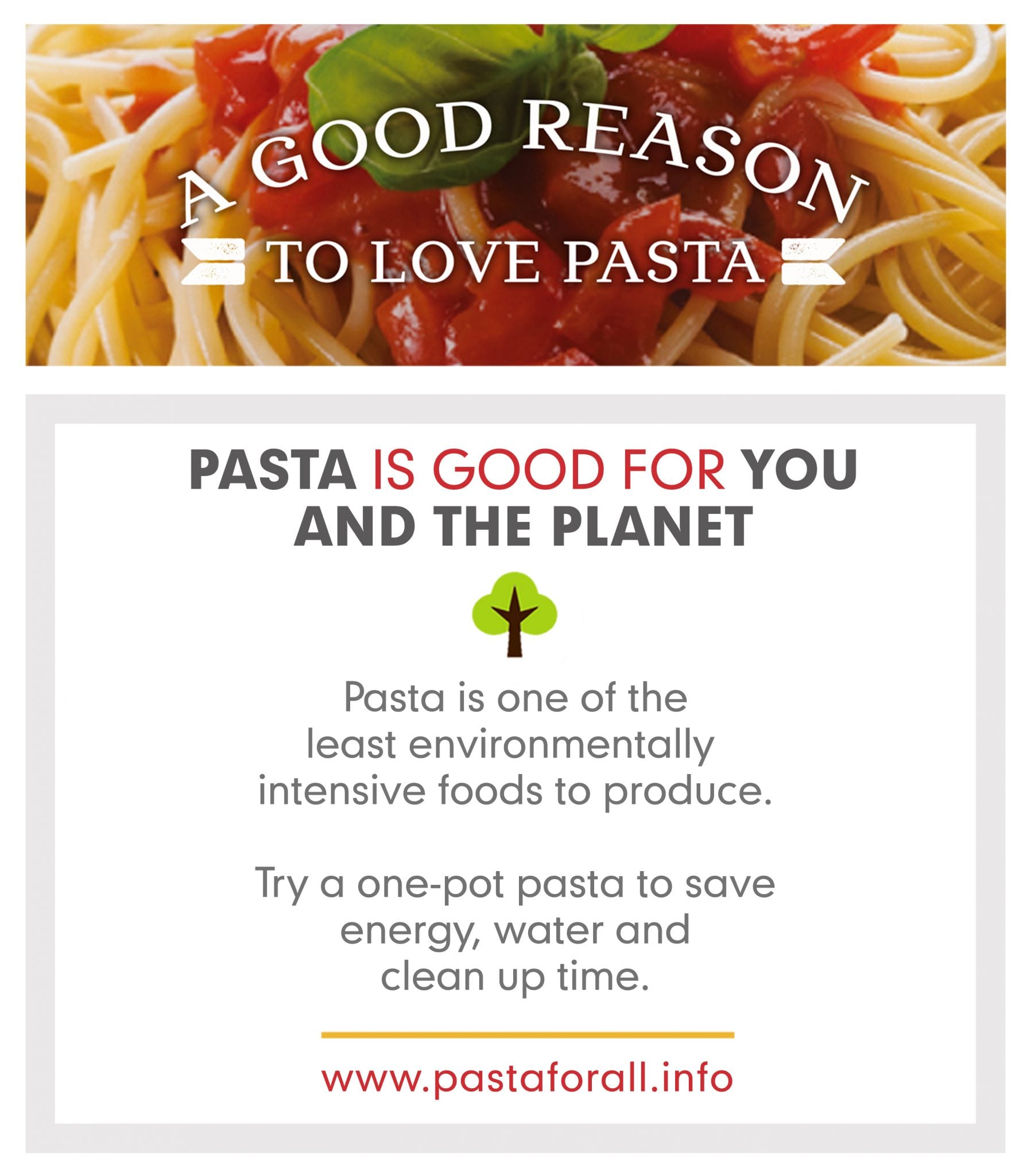Pasta is Good for You and Good for the Planet
- Made from durum wheat semolina or from the flour of other grains mixed with water and/or eggs, pasta is nutritious by itself. Mixed with other healthful foods like olive oil, tomato sauce, vegetables, beans, seafood and lean meats it is a key ingredient of healthy traditional eating plans around the world.
- Few foods can boast a “sustainability index” as high as pasta. In all steps of the food supply chain, pasta is sustainable: from wheat harvesting to pasta production to preparation at home and package disposal. Pasta life cycle analysis shows that, from farm to table, the environmental impact of pasta is quite low. In other words, eating a plate of pasta means choosing a food produced in full respect of the environment. [1] [2] [3] [4]
- Grains are the most important source of food worldwide, providing nearly 50% of the calories eaten, and are some of the least environmentally intensive foods to produce.[5]
- In the aftermath of the Paris climate conference agreement, nations are more committed than ever to improving the health of the planet. New dietary recommendations from the Dutch government recommend slashing meat consumption by almost half for reasons of health and sustainability and other countries like Brazil and the United Kingdom have incorporated sustainability into their dietary guidelines, encouraging more plant foods (like pasta), and fewer animal foods (like meat and dairy).
- While sustainability was not included in the 2015 U.S. Dietary Guidelines, a national poll from the Johns Hopkins Center for a Livable Future found that 74% of Americans say dietary guidelines should include sustainability measures, and that 92% believe that producing food in a sustainable way is a high priority.
- Given the heightened awareness of climate change and our environment, it is clear that the long-term sustainability of food is inseparable from discussions of health and wellness. After all, the food system is thought to account for up to one third of global greenhouse gas emissions, and is the largest contributor of non CO2 greenhouse gases.
- Fortunately, foods like pasta can contribute to reducing the global warming of our planet. In his address at World Pasta Day 2016 in Moscow, key speaker, scientist and winner of the Nobel Peace Prize for his work on sustainability with the Intergovernmental Panel on Climate Change (IPCC) and Professor at the University of Tuscia (Italy), Riccardo Valentini said, “Feeding the planet sustainably has become one of our greatest challenges. Plant-based foods like pasta have a very low carbon footprint. As a simple and nutritious food available worldwide, pasta can be part of the solution.”
- Grains are among the least intensive foods to produce, requiring fewer resources and water per calorie than most other foods. Research published in Ecosystems found that grains (like the wheat used to make pasta) use only 0.51 liters of water to produce 1 calorie of food. On the other hand, beef production uses 10.19 liters of water to produce 1 calorie of food, while fruits use 2.09 liters per calorie, and vegetables use 1.34 liters per calorie.
- The carbon footprint of pasta is only 15.5 oz CO2eq/lb (34.44g CO2eq/kg), much lower than many other foods.
- Noted Brazilian nutritionist Alessandra Luglio explains that pasta “has many environmental advantages. With just two ingredients, it comes straight from nature and the process is simple.”
- Recognizing the importance of sustainable diets, nutrition experts at the 2015 Healthy Pasta Meals Scientific Consensus meeting, organized by the nonprofit Oldways, added a point about sustainability for the first time to the Scientific Consensus statement, declaring that “pasta is a simple plant based food, and has a low environmental impact.”
Back to 5 Good Reasons to Love Pasta
[1] Baroni, L., Cenci, L., Tettamanti, M. Berati, M. Evaluating the environmental impact of various dietary patterns combined with different food production systems. European Journal of Clinical Nutrition (2006) 1-8
[2] FAO (2012) Sustainable Diets and Biodiversity
[3] Scarborough P. et al, 2014. Dietary greenhouse gas emissions of meat-eaters, fish-eaters, vegetarians and vegans in the U.K, Climatic Change (2014)
[4] BCFN (2012). Double Pyramid 2012: enabling sustainable food choices
[5]http://wholegrainscouncil.org/files/2014wgcBBconf_BarriersMyths.pdf P. 11




